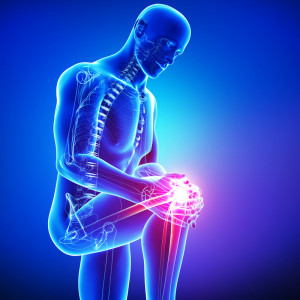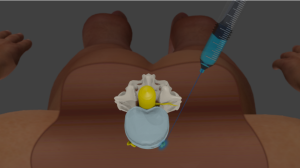What is reflex sympathetic dystrophy?
Reflex sympathetic dystrophy (RSD), also known as complex regional pain syndrome (CRPS), is a type of chronic pain which regularly affects a leg or an arm, and develops after a stroke, heart attack or surgery. Its most distinctive characteristic is pain disproportionate  to the pain of the initial injury.
to the pain of the initial injury.
What are the common symptoms of RSD?
Reflex sympathetic dystrophy has many symptoms and signs. You may become aware of:
- sensitivity to cold and touch
- painful swelling
- continuous throbbing or burning, most often in the foot, leg or arm
- skin temperature changes: sometimes sweaty and other times cold
- skin color changes: from white or mottled to blue or red
- skin texture changes: becoming thin, tender, or shiny
- changes in nail and hair growth
- joint swelling, stiffness and damage
- muscle weakness, spasms or atrophy (the wasting away of muscle mass)
- diminished ability to move the painful area
It is possible for these symptoms to change over time or to vary from one individual to the next. Your pain may start in one place, then migrate to another part of your body, for example from one foot to the other. Also, you may realize that your pain intensifies in stressful situations.
What is the cause of RSD?
There are two types of reflex sympathetic dystrophy. Although they have similar symptoms and signs, they’re attributed to distinctly different causes. Type 1, once called sympathetic dystrophy syndrome, occurs after an injury or illness that did not inflict damage directly the nerves of the affected limb. Nearly 90% of all RSD patients have type I. 
In contrast, type 2, formerly called causalgia, occurs immediately after an injury to specific nerves. Very often, an episode of RSD follows extreme trauma to a leg or arm, e.g., car crash injuries, amputation, or fractures. Other kinds of traumas, including heart attacks, surgery, infections or even something as seemingly insignificant as a sprained ankle, can bring on reflex sympathetic dystrophy. Persistent stress is also recognized as a contributing factor.
While we do not fully understood how these injuries managed to trigger reflex sympathetic dystrophy, researchers believe it may be the result of a dysfunctional interaction between your peripheral nervous system and your central nervous system, coupled with misguided inflammatory reactions.
What are the complications of RSD?
When reflex sympathetic dystrophy is not diagnosed correctly or in not treated early on, patients may develop more extreme symptoms and signs. These might include: muscle, bone and skin tissue deterioration because the patient intentionally limits moving the affected limb to avoid pain; and tightening muscles that may result in your foot and toes or hand and fingers freezing in a cramped position.
When should I see a workers compensation doctor if I believe I may have RSD?
If you have severe, constant pain in one of your limbs, if moving or touching limb is almost unbearable, you should see your doctor immediately to identify its cause. Remember: for treatment to be successful, it must begin as soon as possible.
How is RSD diagnosed?
An accurate diagnosis of your reflex sympathetic dystrophy will be based on the results of a physical exam and your medical history. No one test can be relied upon exclusively to diagnose reflex sympathetic dystrophy, but there are several procedures used to uncover significant clues. These include:
- testing your sympathetic nervous system to measure skin temperature, blood flow, sweat production, and other physical characteristics
- bone scans to detect changes in your bones
- x-rays to assess mineral loss from your bones
- magnetic resonance imaging (MRI) to reveal changes in your tissue
How is RSD treated?
For some fortunate patients, symptoms and signs tend to diminish and disappear without treatment. However, when treatment is called for, start as soon as possible after the symptoms emerge; this swift response is often highly successful, counteracting symptoms and, on occasion, even resulting in remission.
Phoenix workmans comp doctors often prescribe a variety of medications to treat reflex sympathetic dystrophy symptoms. These include:
- over-the-counter pain medications like aspirin and ibuprofen or prescription medications such as Celebrex

- medications to stall or prevent bone loss
- steroid prescriptions to improve mobility and inhibit inflammation
- anticonvulsants and antidepressants to counter the pain of nerve damage
- medications to block sympathetic nerves and provide some relief from pain
- Lumbar Sympathetic Blocks
Several therapeutic treatments may provide some relief; these include: topical analgesics, hot or cold packs, physical therapy, biofeedback, transcutaneous electrical nerve stimulation and spinal cord stimulation. On occasion reflex sympathetic dystrophy may reoccur following exposure to cold or extreme emotional stress.






Leave A Comment